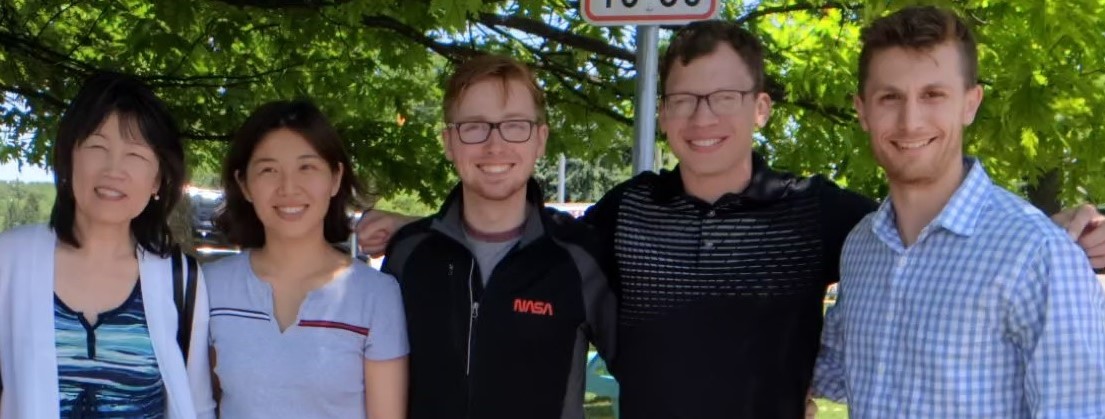Faculty Spotlight: Masako Morishita, PhD
Masako Morishita, PhD, is an associate professor in the Department of Family Medicine.
What brought you to MSU and Family Medicine?
Being promoted to Research Associate Professor at UM was an affirmation of my status as an independent researcher (in my mind anyway). At that point, I decided to explore new research collaboration opportunities and pursue a tenure-track position. In the end, I decided to accept a position at MSU because Dr. Bengt Arnetz and several faculty members in the College of Human Medicine explained to me how public health and population health researchers like me could play a role in broadening interdisciplinary collaboration and working closely with health care professionals and communities. I was already well-aware of MSU’s research activities and resources from working closely with distinguished researchers, like Dr. Jack Harkema at MSU for almost twenty years. I am grateful for the opportunity to be part of this influential department and college.
What are your research interests and what kind of researchers would you be interested in working with?
As director of the newly established MSU Exposure Science Laboratory, I am always seeking new collaboration opportunities, particularly with healthcare professionals. In the course of treating patients, clinicians or medical researchers may wonder about the contribution of environmental (e.g., air pollution, water contaminants) or occupational (e.g., toxic metals) exposures toward the cause of diseases, and these are the kinds of research questions I am interested in exploring with them and others.
What are you currently researching?
Airborne fine particulate matter (PM2.5) is an important risk factor for cardiovascular and respiratory morbidity and mortality. Personal-level interventions may be particularly important to reduce PM2.5 exposure and its adverse health effects for certain vulnerable populations such as older adults. With this in mind, my collaborators and I designed a study of a personal-level intervention to reduce PM2.5 exposure and its adverse cardiovascular health outcomes. Last year, we published our results in JAMA Internal Medicine, reporting that our clinical trial showed that a reduction in PM2.5 exposure via commercially-available portable air filtration systems can decrease systolic blood pressure by 3-4 mm Hg, an amount similar to other lifestyle treatments for hypertension such exercise. This relatively simple and inexpensive personal-level intervention has the potential to reduce the incidence of cardiovascular events, and together with Dr. Robert Brook at UofM, we submitted a renewal R01 application to expand our intervention research; this new proposal scored very well, and we are looking forward to the next phase of our work.
What got you interested in doing this kind of research?
After earning my B.S. in chemical engineering, I pursued my M.S. and Ph.D. in environmental health sciences from the University of Michigan. My experiences with my advisor and mentor, Dr. Jerry Keeler, shaped the course of my academic and research career tremendously. At the time, he and Dr. Jack Harkema at MSU, designed a one-of-a-kind mobile air research laboratory (a 53-ft long trailer equipped for animal/human inhalation exposure field work) to conduct community-based air pollution health effects studies. Dr. Keeler felt that my engineering background and public health interest would fit nicely in a newly-funded project that would heavily utilize this amazing new facility, and so that’s where I completed my doctoral research work. He also introduced me to interdisciplinary research in 1999, when that concept was not yet mainstream. To me, it is similar to playing music in an orchestra or a marching band (where I used to play the clarinet); it’s a humbling and rewarding process in which you provide your unique expertise alongside a diverse array of collaborators who are doing the same. When we all work together successfully, the outcome is amazing.
What do you plan on researching in the future?
I have been very fortunate to work with great researchers around the country to understand the adverse health effects of air pollution. Air pollution remains a major global public health issue; I believe that future studies will need to be directed toward improving our understanding of how personal-level interventions perform under a variety of conditions and among different populations. Given my experience in understanding source-to-receptor pathways of air pollution and their detrimental effects, I feel well-positioned to pursue future intervention research. I hope to continue extending my future efforts in community-based intervention research, with a particular eye toward tackling environmental health disparity issues.

Masako Morishita and her Exposure Science Laboratory team ( from right: Zachary Klaver, Ryan Crane, Spenser Congram, and Fengyao Li).



